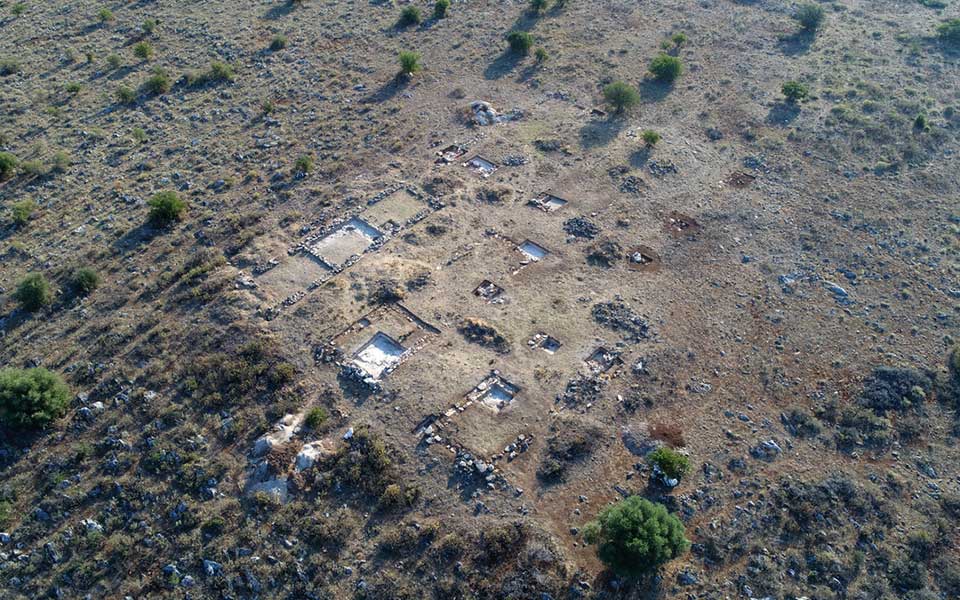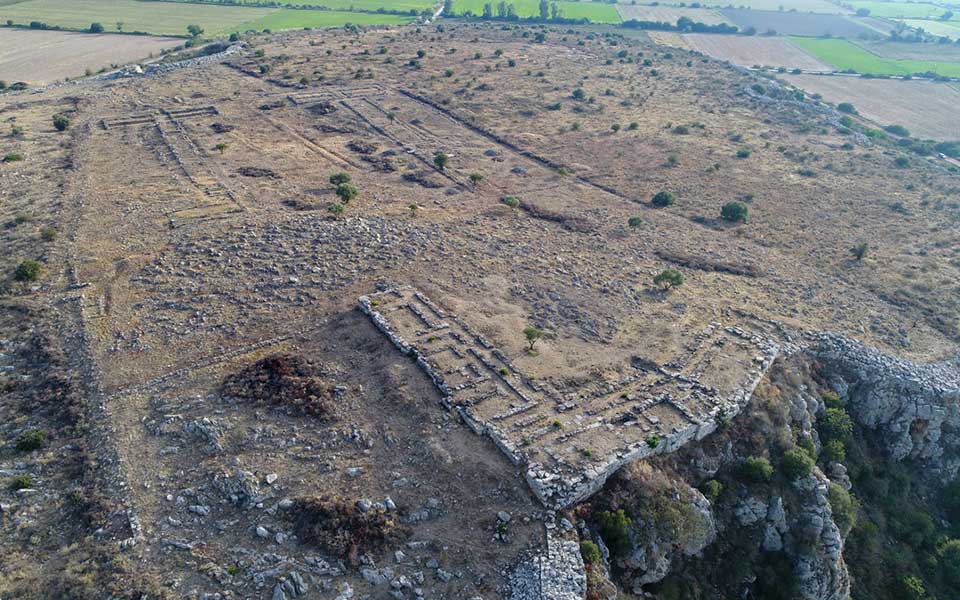A comprehensive framework plan for the future preservation and management of the Mycenaean-era citadel of Gla in Viotia, central Greece, has been approved by the Central Archaeological Council (KAS).
It is hoped that the project will further highlight the archaeological topography of the site and its links to the nearby settlement of Orchomenos in the northwest corner of the Kopais plain, as well as the remnants of prehistoric drainage works in the area.
Extensive documentation of the Late Bronze Age citadel will serve as a precursor for restoration work, which will highlight the construction features of the enigmatic monument.
The project also hopes to incorporate the existing road network to link the site with Orchomenos and Agia Marina, transforming the area into a hub for hiking and heritage tourism. At Gla, the plan includes walking routes around the Cyclopean walls and across the top of the acropolis, allowing visitors to explore the remains of ancient buildings. All the necessary infrastructure, including lighting and signage, will be developed.

© Hellenic Ministry of Culture and Sports
The Unknown Fortress
The flat-topped rocky hill of Gla bears the ruins of the largest fortified site in the Mycenaean Greek world, more than ten times larger than the contemporary fortifications at Athens and Tiryns, and seven times bigger than Mycenae. Despite its enormous size, precious little is known about the site and its role in the political environment of Late Bronze Age Greece.
Located in the plain formed by the drainage what used to be Lake Kopais in central Viotia, the Mycenaean-era fortress encloses the entire plateau of the hill, an area of nearly 20 hectares, and commands panoramic views of the surrounding landscape.
Archaeological excavations have revealed the citadel was built in the early 13th century BC, with 3-meter thick walls and, unusually for a Mycenaean fortress, four gates. Another important feature of the site is the extensive storage space. As such, scholars believe Gla was an important military establishment, with enough on-site facilities to accommodate a large garrison of soldiers, as well as a refuge for farmers during the draining of the lake.
The site was abruptly abandoned at the end of the 13th century BC, during a time that witnessed the collapse of Bronze Age culture across Greece and much of the eastern Mediterranean.
History of research
The ruins of Gla’s fortifications gained the attention of travelers and archaeologists throughout the 19th century, including Edward Dodwell and Heinrich Schliemann. The first systematic excavations were conducted in 1893 by French archaeologist André Ridder, revealing part of the Mycenaean enclosure and storage space, and, in 1894, Ferdinand Noack produced the first topographical plan of the citadel.
Some 60 years later, from 1955-1961, Greek archaeologist Ioannis Threpsiadis conducted extensive excavations, focussing on the gates of the Cyclopean walls and the remains of the southern precinct. Professor Spyros Iakovidis continued the work from 1978-1991, updating previous research and carrying out surveys of hitherto unexplored sections of the site.
The latest round of research on the citadel involves a five-year program (2018-2022) of geophysics, surface survey and excavation, under the direction of Dr. Elena Kountouri, Director of the Directorate of Prehistoric and Classical Antiquities (DIPKA) of the Ministry of Culture and Sports. The multidisciplinary project has uncovered new building complexes, and a large number of finds, including Mycenaean pottery, fragments of wall paintings and anthropomorphic figurines.











